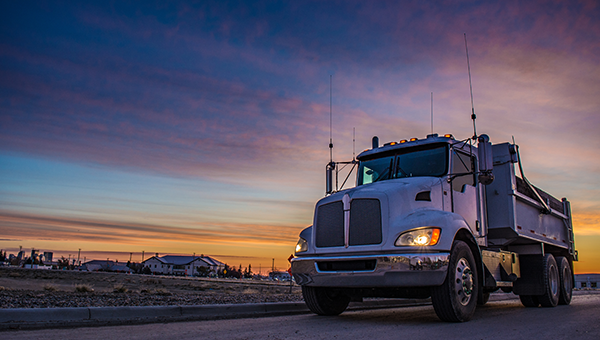
Members are advised that on 7 June the Commercial Vehicle Industry Association of Australia (CVIAA) wrote to the National Heavy Vehicle Regulator (NHVR) seeking, amongst other things, an extension to version 3.2 of Vehicle Standards Bulletin 6 (VSB6) and clarification of the new requirements mandated under the new J4 Tipper Modification Code (section J4). Those new requirements included design certification for tipper body installations that would be required from 1 July 2023.
In the correspondence to the NHVR, CVIAA sought an extension to the 1 July 2023 launch date and sought clarification with regards to the J4 Tipper Modification Code. Industry has told CVIAA that there are wide ranging technical, administrative, and potential legal concerns of CVIAA members with regards to section J4.
It is acknowledged that 3-month section J4 exemptions are being granted to Approved Vehicle Examiners (AVE) who apply for them, but industry participants will still be impacted by the requirements contained within version 3.2 of VSB 6, particularly when the 3-month exemption period ends. Those concerns are reported from many CVIAA members.
What is the issue with Section J4?
The new requirements as mandated under section J4 are a key concern.
Industry remains puzzled as to its introduction and are of the view that the new requirements were introduced in reaction to an isolated incident in New South Wales.
Research published by prominent industry consultant Dr Peter Hart on behalf of the Australian Road Transport Suppliers Association (ARTSA-I) identifies tipper roll overs to be caused by factors outside of any type of design criteria of the tipping bodies.[1] The article describes factors for the roll-overs to be wind, unstable (soft) ground, uneven ground, operator error or sticky loads in the bin. This position of ARTSA-I is supported by WorkSafe Victoria who in 2022 stated that most rollovers occur during tipping activities due to instability of the truck or trailer on uneven, unstable, or inclined ground.[2] Those elements, combined with driver or operator error, cannot be influenced by any design or modification and should not be left to the remit of AVEs. None of these factors are related to tipper design and certainly not an issue for the role of AVEs.
What has CVIAA recommended to NHVR?
To alleviate the impact on industry of section J4, the CEO of Motor trades Association of Australia (MTAA) has this week written to NHVR to request that NHVR adopt the following courses of action for immediate implementation:
- Similar to the NHVR decision of June 2023 to remove H6 (Install approved front underrun protection) and H7 (Design or manufacture or aftermarket front underrun protection),[3] CVIAA recommends that NHVR remove section J4 from the VSB list and publish section J4 as a Vehicle Standards Guide (VSG). CVIAA considers this to be a sensible outcome and is supported by the advice provided to MTAA by professional engineering consultants. It should also be factored that there is no mandated law or directive in Europe, or the USA, enforcing manufactures to carry out stability calculations.
- The responsibility for a design verification/certification must be moved away from all AVEs. There is a heightened opportunity for exposure to litigation from a manufacturer using the parameters of section J4 to shift the design responsibility to the AVE in the event of a design claim made against them. The onus for design certification must be placed firmly with the body builders rather than the signatories. It is not the responsibility of an AVE to dictate how a manufacture should build their bodies. The role of the AVE is to ensure the vehicle complies to the ADR and VSB6 National Code of Practice.
- At the bare minimum, an extension to 31 January 2024 be announced to enable industry to fully envelope the new requirements and transition without financial and efficiency impacts.
- Contributing factors to the lingering technical and administrative issues affecting CVIAA members to VSB6 partially extend from the absence of a National AVE Scheme. CVIAA has been informed by NHVR that such harmonisation will not be considered in the near future. CVIAA urges NHVR to revisit the timeframes for such an introduction and accelerate its introduction.
It is the view of CVIAA that the adoption of these suggested courses of action will alleviate pressures on industry and lessen the impact of the unintended consequences of new VSB 6.
Other
It is important to note that MTAA and CVIAA acknowledge the very many challenges the NHVR faces in administering the Heavy Vehicle National Law and are congnisant of the efforts of the NHVR to minimize the compliance burden and inconsistencies of heavy vehicle regulation.
CVIAA supports sensible legislative and regulatory reform.
Michael McKenna MBA MBLaw
Industry Policy Advisor
[1] Dr Peter Hart, are you getting the most from your tippers?(2023) Prime Magazine < http://www.artsa.com.au/assets/articles/May2023.pdf>.
[2] WorkSafe Victoria, Tipping Roll Over Accident & Guidelines (2022) , [2].
[3] NHVR Vehicle Standards Bulletin 6: Information sheet VSB6 Version 3.2 AVE information,(June 2023) <https://www.nhvr.gov.au/files/media/document/281/202306-1375-vsb6-v32-ave-fact-sheet.pdf> 2 [5]